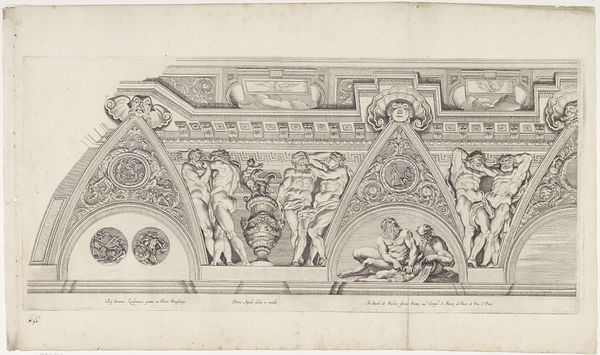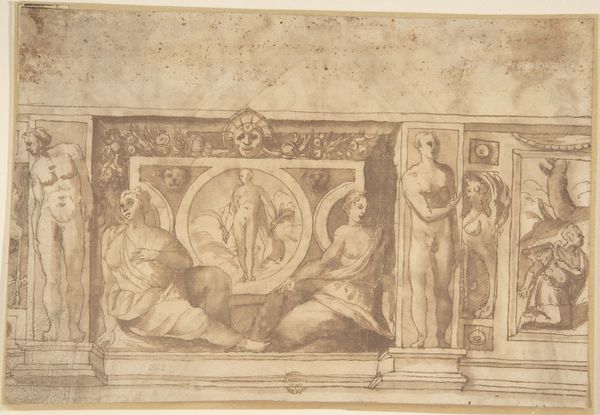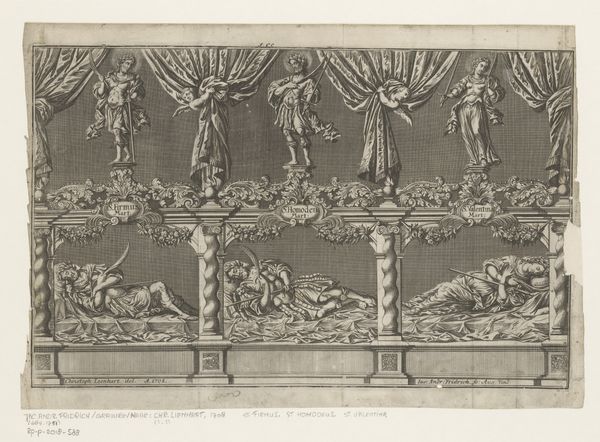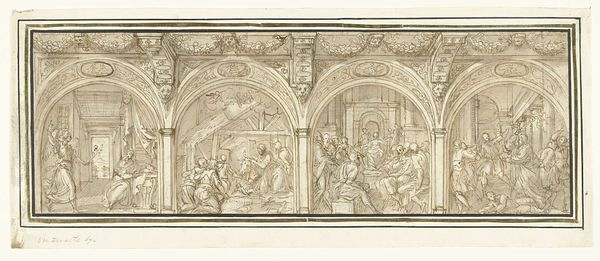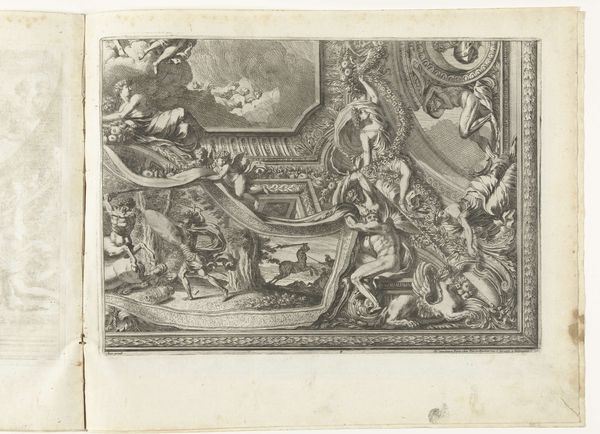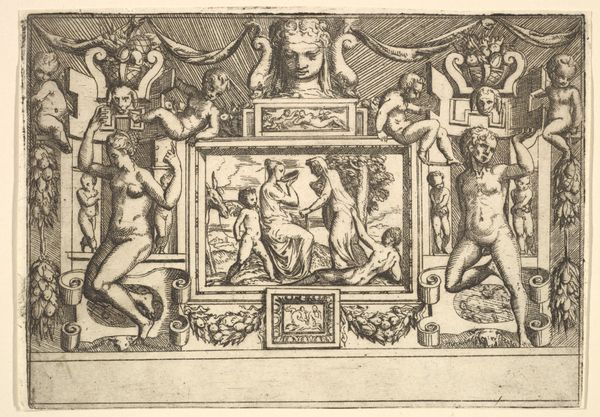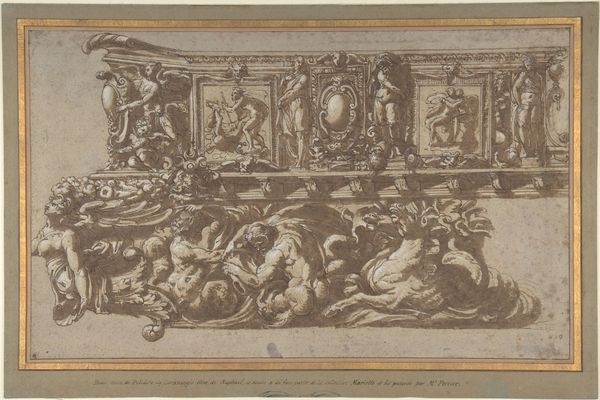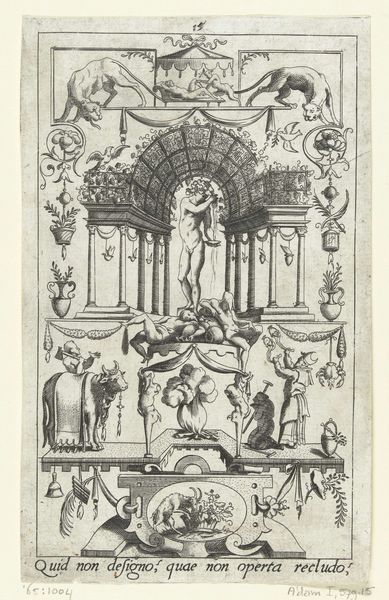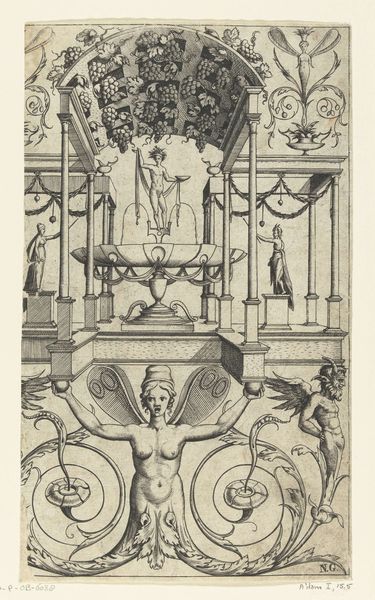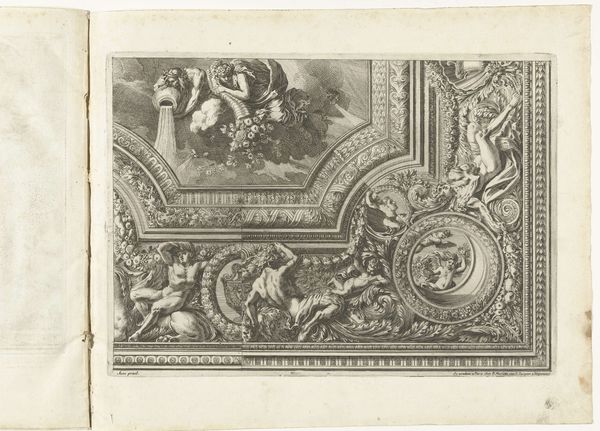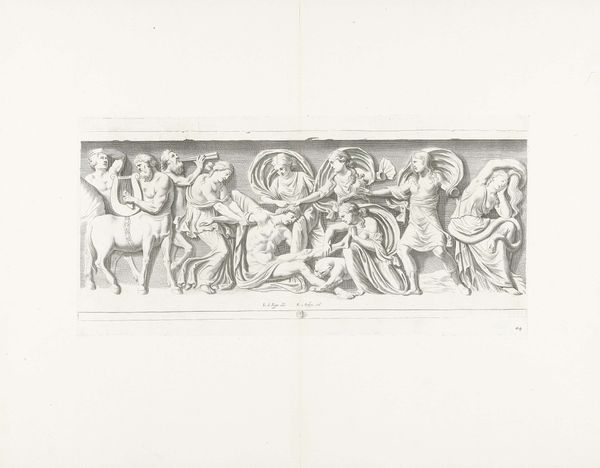
ornament, print, engraving
#
ornament
#
baroque
# print
#
landscape
#
figuration
#
history-painting
#
nude
#
engraving
Dimensions: height 319 mm, width 697 mm
Copyright: Rijks Museum: Open Domain
Curator: Today, we’re looking at a print by Pietro Aquila, made sometime between 1660 and 1692. It’s called "Plafonddecoratie met Olympische goden, naakte figuren en ornament," which translates to Ceiling Decoration with Olympic Gods, Nude Figures and Ornament. Editor: The first thing that strikes me is the sheer theatricality of the composition! There's a dynamic interplay between light and shadow and a palpable sense of grandeur—even in this printed form. It's imposing. Curator: Indeed, the strategic use of light and shadow, or chiaroscuro, amplifies the figures' volumes, providing a very three-dimensional presence on an otherwise two-dimensional surface. Note how each figure’s pose contributes to an overall sense of balance, with a classical arrangement around a central urn. Editor: While I acknowledge the compositional symmetry and masterful rendering of form, I can't help but consider how the depiction of these idealized, hyper-masculine figures reinforces power structures of the time. The Olympian gods, usually only available to the aristocratic eye, dominate and survey the space below, almost a literal interpretation of the male gaze. How accessible would a ceiling such as this be for female viewership in the 17th century, and does that change how the print itself should be read now? Curator: You make a valid point about access and the potential reinforcement of power structures. However, I think the ornament serves an equal purpose: the details also evoke movement and emotion through the flowing lines of foliage, the swelling musculature of the gods, even the way figures in each arched section are counterpoised as mirror images, encouraging closer visual analysis, as well. Editor: Agreed. These Baroque prints offered widespread access to high-style design, impacting tastes of artisans from silversmiths to plasterers across Europe. They played a critical role in disseminating knowledge. And in this case, it might inspire deeper contemplation on our notions of the nude form or power structures represented today. Curator: Yes, it makes us reconsider the dynamics present then and perhaps encourages an audience to challenge their perception now, based on how they view the scene being set, however ornamented, in the overall piece. Editor: Exactly, whether considering representations of power or just admiring the beautiful engraving itself.
Comments
No comments
Be the first to comment and join the conversation on the ultimate creative platform.
